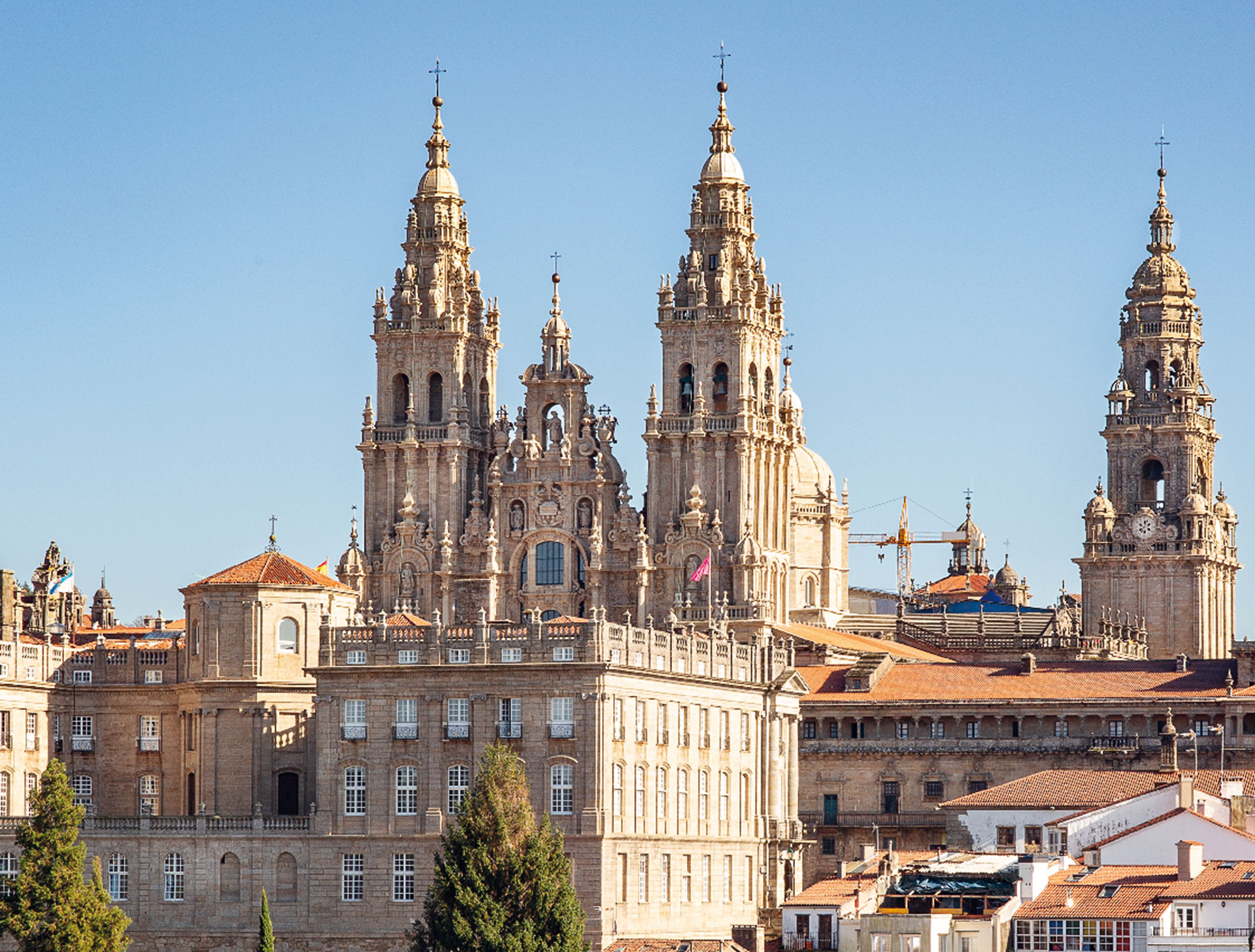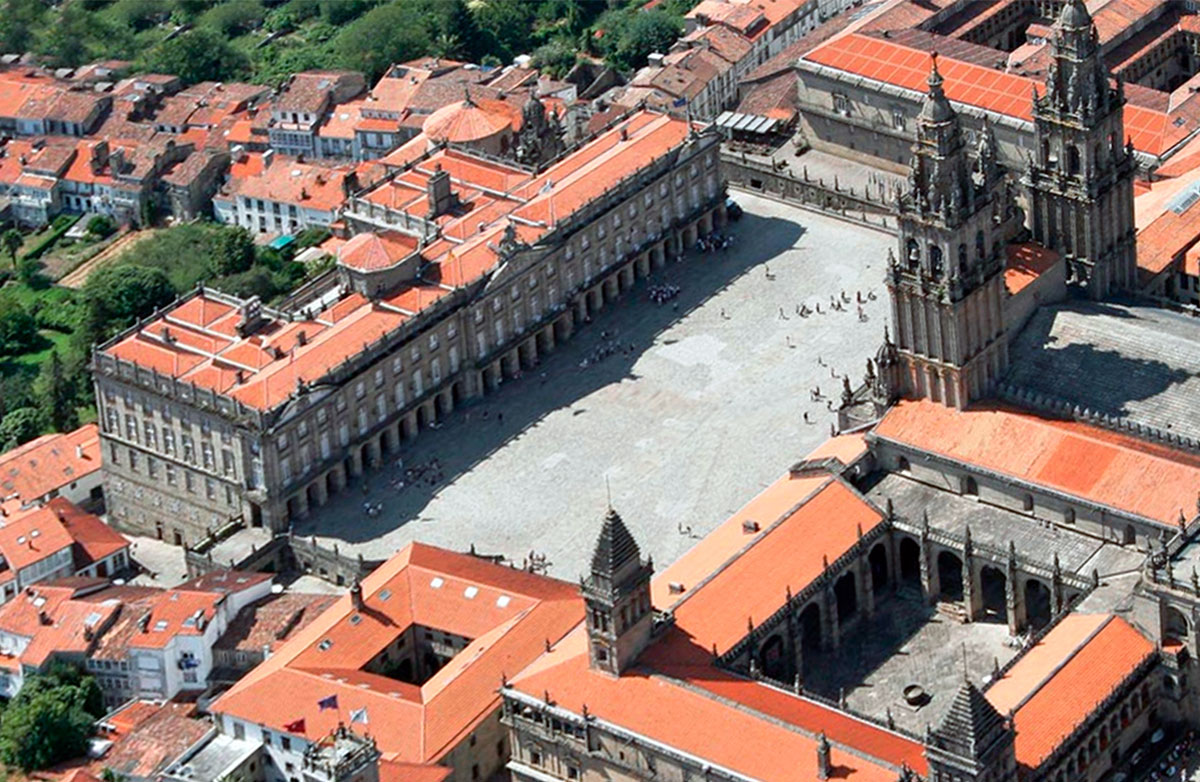The Enchantment of Santiago de Compostela
The Obradoiro Square is undoubtedly one of the most attractive places where you should mingle with the pilgrims, their stories… But Santiago is much more. Its spirit, the music, and culture that envelop its streets…
…take a stroll, have a drink, immerse yourself in the atmosphere of its streets…
On this page, you’ll find some of the most important recommendations, but there are a thousand reasons to come… Are you coming?
Santiago Cathedral
With centuries of existence that have seen Santiago grow from a small forest to the capital of Galicia, the Cathedral is the cross-cutting element capable of rewarding both pilgrims and tourists with its powerful spirituality and beauty.


Obradoiro Square
Obradoiro is the ‘kilometer zero’ of Santiago’s monumental center. Its name means “workshop” in Galician and seems to derive from the stonemasons’ workshops that worked on the Cathedral’s facade.
On one side of the square, you’ll find the headquarters of the University, which is over five centuries old. On the other side, the Hostal de los Reyes Católicos, once a hospice and now one of the most beautiful paradores in Spain. And facing the cathedral, the Pazo de Raxoi, the city hall. Spirituality, University, Administration, and Care for pilgrims and travelers. Here, we find the summary of Santiago’s millennia-old history.
Alameda
Its privileged location, bordering the Historic District, allowed Alameda to become Compostela’s main urban garden. It stands out for the variety of its trees, from oaks to chestnut trees, passing through the impressive eucalyptus trees that can be seen along the Horseshoe Walk.
The Church of Santa Susana, the Lions’ Walk portico, its statues and sculptures, or the granite benches with cast iron backs from the well-known Sargadelos craftsmanship and ceramics factory are some of the wonders you’ll find here.

Mercado de Abastos
El mejor pulpo lo sirven en la Pulpería Abastos. Casa Millán está especializada en comida tradicional gallega hecha en casa. Taberna Abastos es un japonés con tapas y wok gourmet. Frebas se define como el campo llevado a la cocina y en A Ostrería son expertos en productos del mar. Amoado se caracteriza por su cocina tradicional basada en las filloas con un toque personal. Y en Mariscomanía, por un pequeño porcentaje del precio de la compra, te cocinan al momento los productos adquiridos en el Mercado, para saborear toda su frescura in situ.
Parque de Bonaval
Al parque se accede por el estratégico pasadizo que conforman las arquitecturas contrastadas de dos museos: el Centro Gallego de Arte Contemporáneo ‘CGAC-, de diseño actual obra del propio Siza, y el Museo do Pobo Galego -‘Museo del Pueblo Gallego’-, alojado en el que fue convento medieval.
Situado sobre una ladera que mira a poniente, ofrece vistas sorprendentes de los tejados de la ciudad, a las que el artista Chillida dedicó una escultura que encuadra intencionadamente una visión de la ciudad.
San Martín Pinario
The congregation’s power and wealth allowed them to finance reforms that, along with the cathedral, constitute the largest and most valuable ensemble of Galician Baroque.
After the valuable altarpieces were restored in 1991, it housed the exhibition ‘Galicia no Tempo‘, marking the beginning of contemporary Santiago. In 2000, when the city celebrated its status as the European Capital of Culture, “As Faces de Deus” was showcased here. Undoubtedly, a must-visit for any Santiago visitor.
